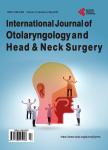Minimally Invasive Pericranial Flap for Reconstruction after Endonasal Endoscopic Surgery of 30 Consecutive Patients
Minimally Invasive Pericranial Flap for Reconstruction after Endonasal Endoscopic Surgery of 30 Consecutive Patients作者机构:National Institute of Oncology and Radiobiology Havana Cuba Juan Manuel Márquez Pediatric Hospital Havana Cuba
出 版 物:《International Journal of Otolaryngology and Head & Neck Surgery》 (耳鼻喉(英文))
年 卷 期:2018年第7卷第4期
页 面:199-208页
学科分类:1002[医学-临床医学] 100214[医学-肿瘤学] 10[医学]
主 题:Minimally Invasive Pericranial Flap Anterior Cranial Base Reconstruction
摘 要:Objectives/Hypothesis: The introduction of intranasal pedicled flaps has reduced the incidence of postoperative cerebrospinal fluid (CSF) leaks to less than 5%. Nevertheless, in malignant tumors those flaps are not always available because of nasal septum invasion. Minimally invasive pericranial flaps (PCF) are associated with minimal adverse effects and good cosmetic appearance. In spite of that, there are only a few reports of this reconstructive technic limited to short surgical series and radio-anatomical analysis. Clinical results of a surgical cohort are presented. Study Design: Cohort prospective study. Methods: Clinical data, including age, gender, stage, histopathological findings, rate of complications and appearance of PCF at fifth day and two months postoperative were recorded. Postoperative morbidities were recorded as wound abnormalities, nasosinusal, orbital and central nervous system complications. Chi-squared test was used to correlate qualitative variables and Student-t-test to correlated qualitative and quantitative variables. Items were considered statistically significant with a p value of less than 0.05 (confidence Interval of 95%). Results: Thirty patients (18 males and 12 females) were registered. Mean age was 51.5 years ± 23.0 and range between 20 and 71 years. Most common histologic subtypes were adenocarcinoma, epidermoid carcinoma and squamous cell carcinoma. Complete resection of the tumor was achieved in all patients including surgical margins. Length of the PCF varies between 9.9 cm and 13.9 cm with a mean of 11.8 cm. There was an association between length of the flaps and the covering structure with the nose apex relation. None patient experienced postoperative cerebrospinal fluid (CSF) leak, frontal sinusitis or other complications. Conclusions: Minimally invasive PCF constitute a good and inexpensive reconstructive option in patients with malignant anterior cranial base tumors in whose nasoseptal flap was not a feasible option.



